Canaries as Pets – How to Keep Them Happy and Healthy?
Canaries as pets have captured the hearts of bird enthusiasts for centuries, offering a perfect blend of beauty, song, and companionship. These vibrant songbirds represent an ideal entry point into avian care, combining relatively simple maintenance with the profound joy of their melodious voices. Whether you’re considering your first feathered friend or expanding your existing collection, canaries provide an enriching experience that transforms any living space into a haven of natural music and color.
The appeal of keeping canaries as pet extends far beyond their famous songs. These intelligent creatures offer emotional rewards, require minimal space, and adapt well to various home environments. This comprehensive guide explores everything you need to know about canaries, from initial setup to advanced breeding techniques.
Table of Contents:
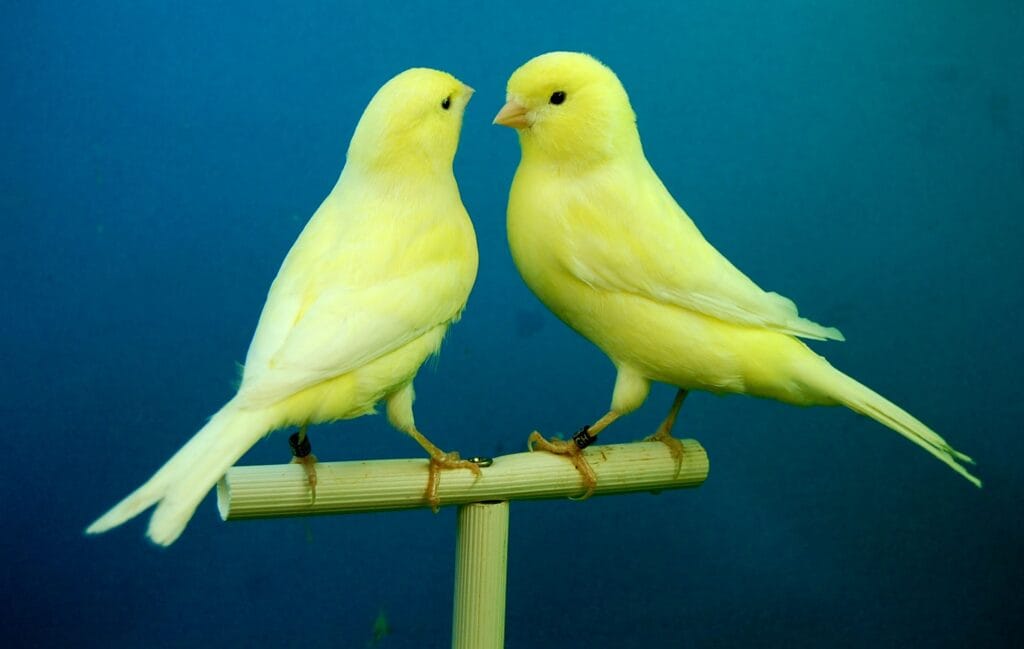
Understanding Canaries as Pets: Species Overview
Origins and Natural History
Canaries as pet trace their lineage to the wild canaries of the Canary Islands, Azores, and Madeira. Through centuries of selective breeding, these domesticated birds have developed into numerous varieties, each with unique characteristics that make them suitable as companion animals.
Why Choose Canaries as Pets Over Other Birds
When considering canaries as pet, several advantages become apparent. Unlike parrots or cockatiels, canaries don’t require constant social interaction to thrive. They’re naturally independent, making them perfect for busy households. Additionally, canaries are generally quieter than larger birds, though their songs are far more pleasant than random squawking.
Essential Requirements for Keeping Canaries as Pets
Housing Your Canary: Cage Selection and Setup
Proper housing forms the foundation of successful canary pet ownership. Canaries require cages that prioritize horizontal space over height, as these birds are natural flyers rather than climbers. A minimum cage size of 18x18x24 inches accommodates a single bird, though larger dimensions always prove beneficial.
The cage setup significantly impacts your canary’s wellbeing. Natural wood perches of varying diameters promote foot health, while placement near windows provides essential natural light without exposing birds to drafts or temperature extremes.
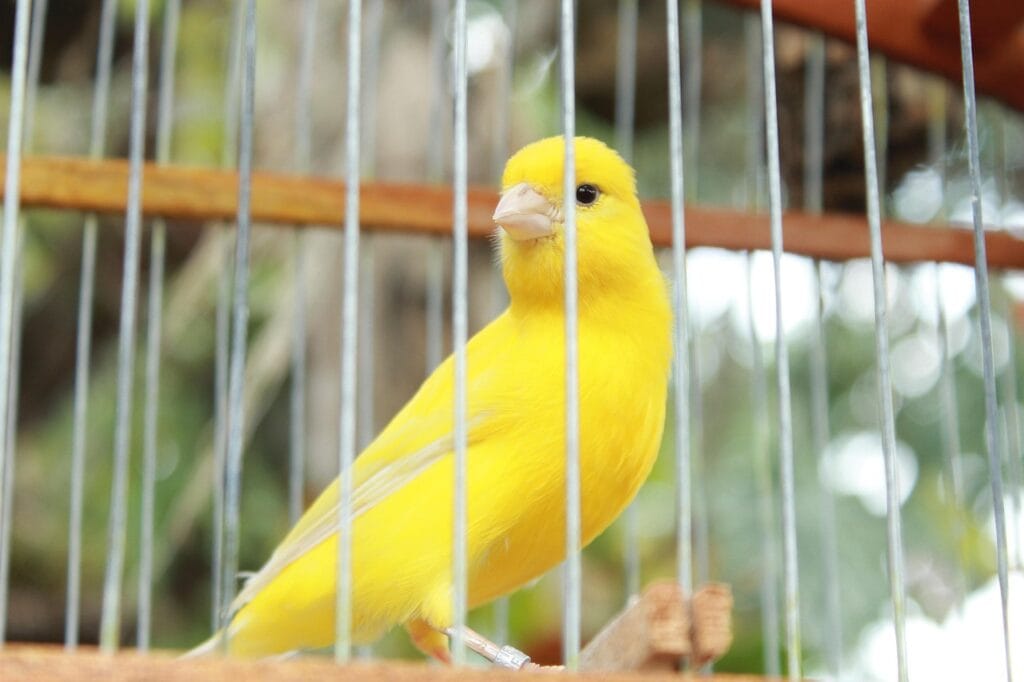
Nutritional Needs: Feeding Your Canary Properly
Canaries as pet thrive on a varied diet that extends beyond basic seed mixes. High-quality canary seed blends should form the foundation, supplemented with fresh fruits, vegetables, and commercial pellets. Cuttlebone provides essential calcium, particularly important for breeding females.
Fresh foods for canaries include dark leafy greens, carrots, apples, and broccoli. Avoid avocado, chocolate, caffeine, and high-salt foods, which prove toxic to these sensitive birds. Water should be changed daily, and many canaries enjoy bathing in shallow dishes.
Behavioral Characteristics of Canaries as Pet
Song and Communication Patterns
The melodious songs that make canaries as pet so appealing vary significantly between individuals and breeds. Male canaries typically sing more frequently and with greater complexity, especially during breeding season. Their songs serve multiple purposes: territory marking, mate attraction, and general contentment expression.
Social Dynamics and Interaction
While canaries can be kept singly or in pairs, they don’t require constant human interaction like many parrot species. They’re naturally social with their own kind but maintain independence that makes them suitable for people with varying schedules.
Health and Wellness for Canaries as Pets
Common Health Issues and Prevention
Maintaining healthy canaries as pets requires understanding common ailments and their prevention. Respiratory infections, mites, and egg-binding in females represent the most frequent health challenges. Regular cage cleaning, proper ventilation, and stress reduction significantly minimize these risks.
Veterinary Care and Regular Checkups
Establishing a relationship with an avian veterinarian proves crucial for canaries. Annual checkups help detect issues early, while emergency care addresses sudden illnesses. Many canary health problems respond well to treatment when caught promptly.
Breeding Canaries as Pets: Advanced Considerations
Breeding Season Preparation
For those interested in breeding canaries like pets, understanding seasonal cycles proves essential. Canaries typically breed from late winter through mid-spring, triggered by increasing daylight hours. Proper nutrition, including egg food and sprouted seeds, prepares birds for successful reproduction.
Nesting and Chick Care
Successful breeding requires separate breeding cages, nest pans with appropriate lining, and quiet environments. Female canaries typically lay 3-5 eggs, with incubation lasting 13-14 days. Both parents contribute to chick feeding, though experienced males often take primary responsibility.
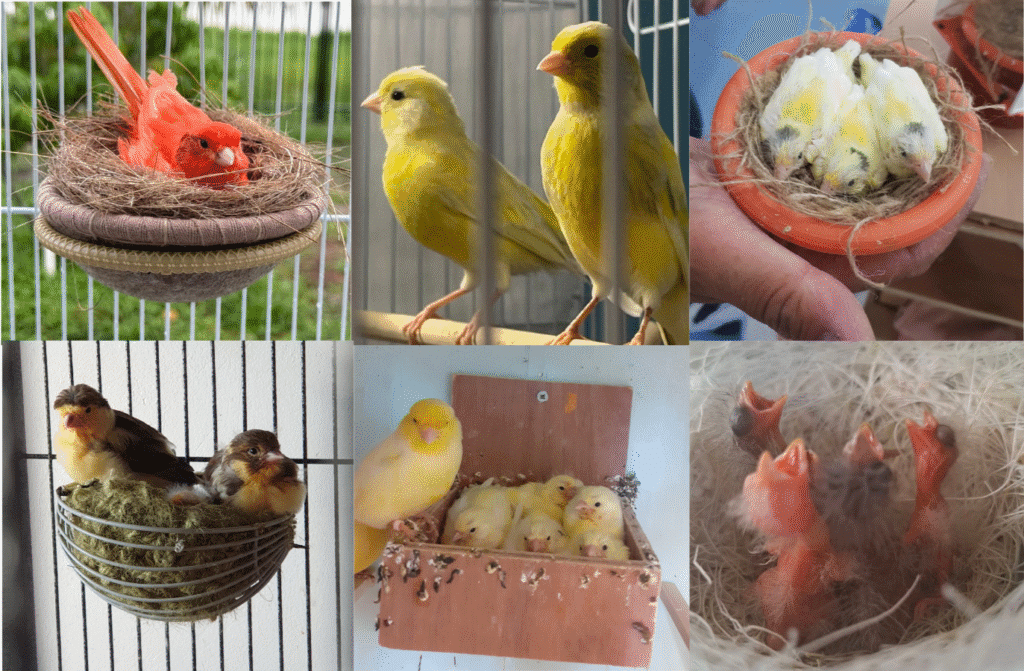
Different Types of Canaries as Pets
Song Canaries
Song canaries represent the most traditional choice for canaries as pet. Breeds like the Roller and American Singer have been selectively bred for their vocal abilities, producing complex, beautiful songs that serve as natural home entertainment.
Color Canaries
Color canaries offer visual appeal through selective breeding for specific hues. Red Factor canaries, achieved through crossbreeding with red siskins, create stunning orange and red plumage. Lipochrome varieties produce clear, intense colors without dark markings.
Type Canaries
Type canaries focus on body shape and feather characteristics rather than song or color. Gloster canaries feature distinctive crests, while Norwich canaries display compact, rounded bodies. These varieties often participate in competitive showing.
Advanced Care Techniques for Canaries as Pets
Lighting and Seasonal Management
Successful canary care involves understanding their light sensitivity. Canaries as pet respond dramatically to photoperiod changes, affecting molting, breeding, and overall health. Full-spectrum lighting on timers can regulate these cycles artificially for indoor birds.
Environmental Enrichment
While canaries as pets don’t require extensive toy collections like parrots, they benefit from environmental variety. Rotating perches, occasional treats hidden in paper cups, and access to natural sunlight (when safe) enhance their quality of life.
Training and Socialization of Canaries as Pets
Basic Training Techniques
Training canaries as pet differs significantly from parrot training. These birds respond better to routine and environmental management than direct commands. Consistent feeding times, regular cage cleaning, and predictable daily schedules create security and trust.
Song Training for Males
Young male canaries can be song-trained using tutor birds or recordings. This process, beginning around 4-6 weeks of age, involves isolating the bird in a quiet environment and exposing it to desired song patterns consistently.
Seasonal Care Considerations
Molting Management
Annual molting represents a stressful period for canaries as pets. During this time, birds shed and regrow feathers, requiring additional protein and minimal disturbance. Proper nutrition and environmental stability support healthy molting cycles.
Winter Care Requirements
Indoor canaries as pet need special consideration during winter months. Shorter daylight hours can trigger depression or behavioral changes. Supplemental lighting and maintaining consistent temperatures help birds navigate seasonal transitions successfully.
Creating the Ideal Environment for Canaries as Pets
Room Selection and Setup
Choosing the right location for canaries as pet significantly impacts their wellbeing. Ideal rooms offer natural light without direct sun exposure, stable temperatures, and minimal disruption from household activities. Kitchens should be avoided due to cooking fumes and temperature fluctuations.
Safety Considerations
Canary-proofing your home ensures the safety of these curious birds. Common hazards include open windows, ceiling fans, other pets, and household chemicals. Creating a safe environment allows occasional supervised out-of-cage time for exercise and exploration.
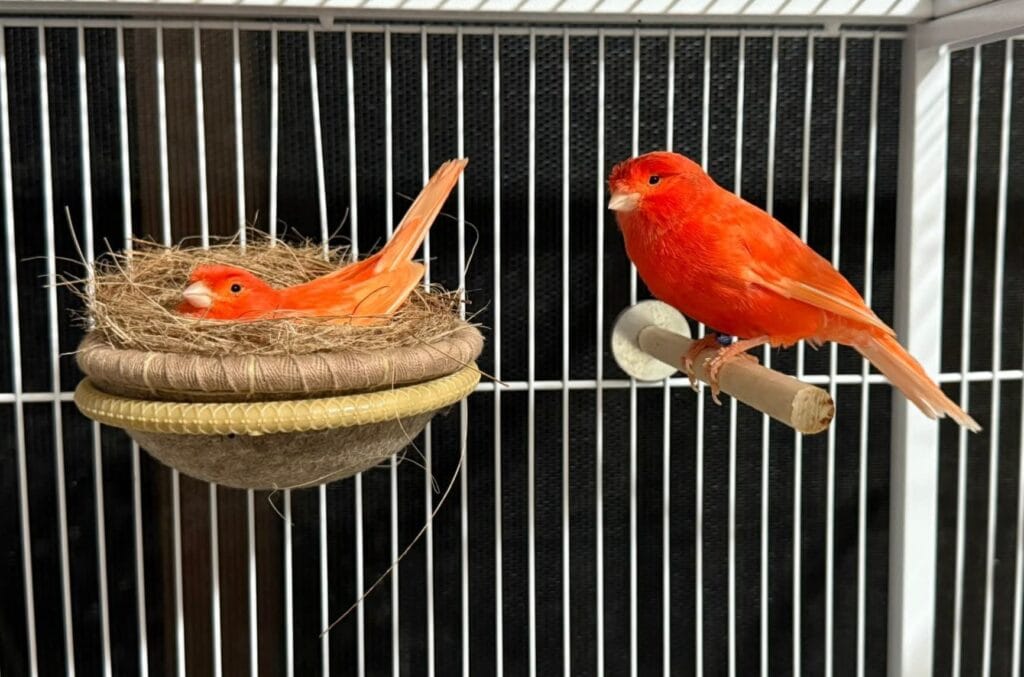
Cost Considerations for Canaries as Pets
Initial Setup Expenses
The initial investment for canaries as pet includes cage, perches, food dishes, and basic supplies. Quality cages range from $50-200, while ongoing monthly costs for food and supplies typically remain under $20 per bird.
Long-term Financial Planning
Canaries as pets can live 8-15 years with proper care, requiring long-term financial planning. Veterinary care, cage replacements, and quality food represent the primary ongoing expenses. Emergency medical funds prove wise for unexpected health issues.
Common Mistakes in Canary Care
Overcrowding and Inappropriate Housing
Many new owners underestimate space requirements for canaries as pets. Overcrowding leads to stress, aggression, and health problems. Each bird needs adequate personal space and multiple perching options.
Dietary Deficiencies
Seed-only diets represent a common mistake among canary owners. While seeds form the foundation, canaries as pet require diverse nutrition including fresh foods, pellets, and mineral supplements for optimal health.
Canaries as Pets for Different Lifestyles
Apartment Living Considerations
Canaries as pet adapt well to apartment living due to their moderate size and relatively quiet nature. Their songs typically don’t disturb neighbors, and single birds require minimal space compared to larger parrots.
Family Households with Children
When properly supervised, canaries as pets can enrich family life. Children learn responsibility through daily care routines, while the birds’ songs provide natural stress relief for busy households.
Building a Relationship with Your Canary
Understanding Canary Body Language
Successful canary ownership requires interpreting avian body language. Canaries as pets communicate through posture, feather position, and vocalizations. Recognizing signs of contentment, stress, or illness helps maintain optimal care.
Bonding Without Handling
Unlike many pet birds, canaries as pets don’t typically enjoy handling. Bonding occurs through consistent care, talking to birds, and respecting their natural behaviors. Many canaries learn to recognize their owners and respond to familiar voices.
Showing and Competition
Preparing Canaries for Shows
Competitive showing represents an advanced aspect of keeping canaries as pets. Show birds require specialized conditioning, including controlled lighting, premium nutrition, and gentle handling training. Success in showing depends on breed standards, bird condition, and presentation skills.
Joining Canary Clubs and Communities
Many canary enthusiasts join local clubs or online communities to share experiences and knowledge. These groups provide valuable resources for both beginners and experienced keepers, from health advice to breeding programs.
Conclusion: The Enduring Appeal of Canaries as Pets
Canaries as pets continue to captivate bird lovers worldwide through their combination of beauty, song, and manageable care requirements. These remarkable birds offer emotional rewards through their daily songs while requiring relatively simple maintenance compared to larger parrots.
Whether you choose a melodious song canary, a vibrant color variety, or an elegant type breed, canaries as pets provide years of companionship and joy. Their adaptability to various living situations, combined with their natural independence, makes them ideal for both novice and experienced bird keepers.
The journey of caring for canaries as pets extends beyond daily maintenance to encompass breeding, showing, and community involvement. These activities enrich the hobby while connecting enthusiasts with like-minded individuals who share their passion for these extraordinary birds.
Success with canaries as pets requires dedication, patience, and respect for their natural behaviors. By providing proper housing, nutrition, and environmental enrichment, owners can enjoy the full spectrum of rewards these magnificent birds offer. From the first morning song to the excitement of successful breeding, canaries as pets create lasting memories and deep satisfaction for those who welcome them into their homes.
FAQ
How long do canaries as pets typically live?
With proper care, canaries as pets can live 8-15 years, with some exceptional birds reaching 20 years. Lifespan depends on genetics, diet, housing conditions, and veterinary care.
Do canaries as pets require companionship from other birds?
Canaries as pets can thrive alone or in pairs. Unlike some social birds, they don’t require constant companionship and can be perfectly content as single pets with proper human interaction and environmental enrichment.
How much space do canaries as pets need in their cage?
Canaries as pets need a minimum cage size of 18x18x24 inches for a single bird, though larger is always better. The cage should prioritize horizontal space over height to accommodate their natural flying behavior.
Are canaries as pets suitable for beginners to bird keeping?
Yes, canaries as pets are excellent for beginners due to their hardiness, relatively simple care requirements, and independence. They don’t require constant handling or social interaction, making them more forgiving than many other pet birds.
Did you enjoy this article?
Help other pet lovers benefit too — Share it on social media! 🐾💚

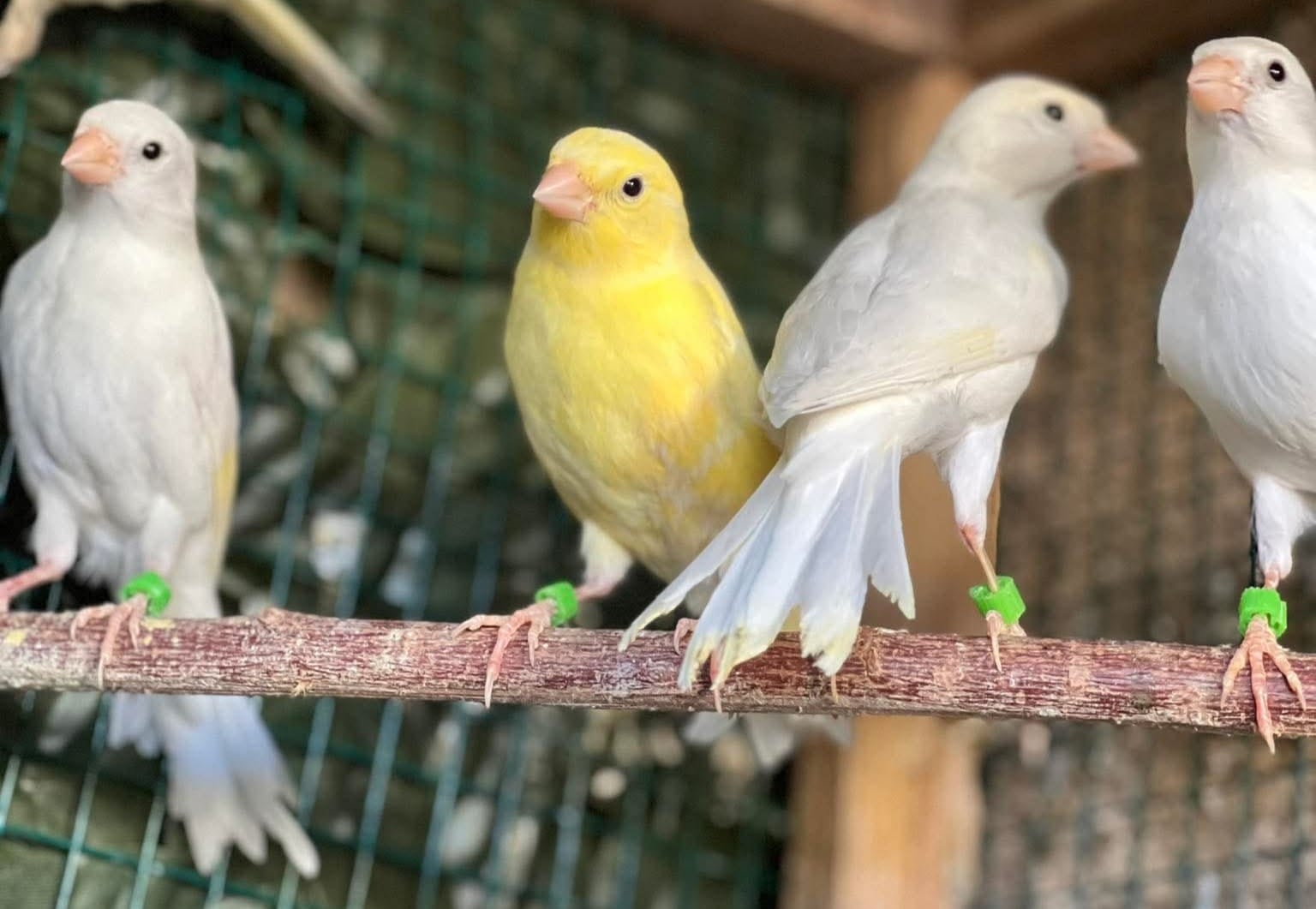
Leave a Reply